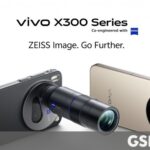It is difficult to turn an iconic, affordable, available, statement brand into an exclusive, high-touch, rare, luxury brand, particularly when customers do not envision the brand as a competitor of Hermès, Maserati, Rosewood Hotels, or Cartier.
After seven years of effort, The Wall Street Journal pronounced Burberry’s high-end, turn-upmarket-around strategy a failure. After becoming too mid-market and accessible in the 1990s, Burberry’s leadership saw the financial possibilities associated with making Burberry’s “plaid” prestigiously premium, aiming Burberry into the stratosphere of an exclusive, luxury brand, competing with Louis Vuitton and Chanel.
This article is part of Branding Strategy Insider’s newsletter. You can sign up here to get thought pieces like this sent to your inbox.
According to The Wall Street Journal, Burberry “… spent more than £700 million roughly $911 million … on investments to make the brand seem more high-end….” Almost a US billion dollar failure. And, for seven years. Anyway, part of this quest for wealthier customers meant raising prices, a move that alienated Burberry’s core base of customers.
(As an aside, chasing the customers who do not love you at the expense of customers who love you is death-wish marketing. Apparently, Burberry decided to lose the customers who purchased Burberry’s items in the hopes of attracting customers who had not yet considered Burberry as an option. An evergreen marketing principle: Ignore your core at your peril. You must adore your core.)
One fashion observer indicated that Burberry’s real competitive set is Lanvin and Ferragamo, both old, established, more traditional national brands. Lanvin, French, established in 1889, the oldest fashion house still in existence, has always been a brand for chic, sophisticated women of tailored style. Modern but with a redolence of retrained retro. Ferragamo, Italian, is struggling with its image of being for older women with traditional Italian tastes and styles. Ferragamo just underwent a modernization program, a big part of which is a new logo. At a recent fashion show, observers noted that Ferragamo clothing now included more modern tailoring.
Burberry, British, now has a new CEO. The new CEO, Joshua Shulman, worked at Michael Kors and Coach, mid-price, accessible, luxury-aspirational brands. The Wall Street Journal states that Mr. Shulman’s remit will be to determine which road to travel: uphill or level.
This is a false scenario.
There is a proven third pathway that Burberry should consider if Burberry still desires to reach luxury customers. When your brand starts out as an aspirational-luxury brand, not really luxury, but as close as your customers can manage to achieve, it is difficult to suddenly become high-end luxury. However, smart brand owners know that one way to achieve a wealthier customer base amid the hierarchy of luxury brands is through brand extension.
Brand Extension is a form of Brand Architecture. Brand Architecture is the particular approach marketers use to define the relationship between brands within an entire brand portfolio.
Brand Architecture must be on every marketer’s to-do list. Brand Architecture is an absolutely essential part of a brand management agenda. Not addressing Brand Architecture is brand mismanagement. Marketers spend millions of dollars on picking a name for a brand. Then, marketers invest little in figuring out how their various “named” brands relate to one another.
Marketers need to step away from the idea that brand extensions are only for packaged goods such as Tide or Arm & Hammer. Marketers also have to step away from the idea that brand extensions weaken brands. Well-thought-out and well-managed brand extensions do not weaken brands. Brand extensions strengthen brands.
Brand extensions have relevant, differentiated benefits, multiple product designs and provide customers the opportunity to use the brand in a different manner, increasing customer share. Samsung is a great example of how having an innovative mobile phone that young adults love can imprint Samsung – top-of-mind – potentially segueing young adults to the high-end, high-quality Samsung washers and dryers later on in life.
Brand extensions allow levels or tiers of brands that can maximize the needs of luxury shoppers for exclusivity, rarity and availability. Brands such as Johnnie Walker and American Express created luxury brand offerings through brand extension.
Johnnie Walker has tiers of Red, Black, Double Black, Green and Blue. So, for example, Red Label is a less expensive, spicier bold flavor that is great for mixed drinks. Blue Label is deep-flavored rare Scotch Whisky. Black Label has a smooth, complex taste designed for sipping.
American Express entered the credit card marketplace with the ubiquitous green card. American Express now offers Gold, Platinum and Black Centurion cards, not counting its entries in business cards and cards that allow you to pay off less than the amount spent. The Black Centurion card provides a singular, personal status card that places the user in a very small elite group of individuals. The Centurion airline clubs enhance the exclusivity of the Black Centurion card.
Chase traveled upstream with its Chase Sapphire Reserve credit card. The Chase Sapphire Reserve credit card has a $550 yearly fee compared with the Chase Sapphire Preferred credit card with a $95 yearly fee. Chase has multiple, affordable credit cards including its Freedom line of cards and its wide array of affinity cards (United Airlines, Marriott Bonvoy, IHG, Disney, Amazon, DoorDash) and many other co-branded cards.
Giorgio Armani clothes attract older, wealthier women who appreciate his tailored, yet high-style European look. Giorgio Armani Privé is for that small clientele who prefer couture rather than ready-to-wear. Armani also sells Blue Label items that are the more expensive R-T-W items. There are also Red Label and a Black Label designs. For those who cannot afford the high-price for many Armani styles there are A/X, Armani Jeans and Armani Junior. And, for those who need more Armani, there is Armani Casa.
Mercedes-Benz traveled even farther upstream with its Maybach brand. Financing can put anyone behind the wheel of a Mercedes. Not so a Maybach.
Knowing the best Brand Architecture for your portfolio is critical.
Toyota decided that it would be better if a new luxury-challenger brand were a solo brand, Lexus, not a brand extension, unrelated to Toyota. A solo brand has its own product design and its own relevant, differentiated benefits. A solo brand is effective and focused. But, a solo brand is expensive. A solo brand is expensive to develop and market.
There is also Family branding. Family branding is more complicated and probably best left for a different discussion.
Along with a new CEO, Burberry has also just hired a new CMO. The new CMO is known as being skilled in building a “digital savvy marketing organization.” The new CMO is someone whom clothes-design observers describe as a fashion brand rejuvenation specialist. All good news.
Marketing alone will not solve all of Burberry’s problems with becoming luxury. Burberry’s vision takes hits from operations, going way beyond branding.
Burberry makes a lot of money selling to outlet stores. The Wall Street Journal estimates that Burberry makes about US $1 billion from outlet stores. There is an inherent challenge in selling tons of off-price merchandise in your local outlet mall while asking bespoke store customers to buy at inflated prices.
Additionally, outlet malls make Burberry an available brand. Some luxury brand experts think it is not possible to be a luxury brand and be available. These luxury experts believe a most important cachet of luxury is rarity. The Burberry brand is not rare.
Recently, someone said that brand and branding are just perceived as image issues these days. This is incredibly sad and wrong-headed. Burberry could benefit from some real understanding of brand management and brand architecture evergreen principles. The seven-year “let’s-be-luxury-close-to-US $1 billion-experiment, might have been successful if Burberry utilized a brand extension architecture.
Branding Strategy Insider is a service of The Blake Project: A strategic brand consultancy specializing in Brand Research, Brand Strategy, Brand Growth and Brand Education
FREE Publications And Resources For Marketers
Post Views: 35










